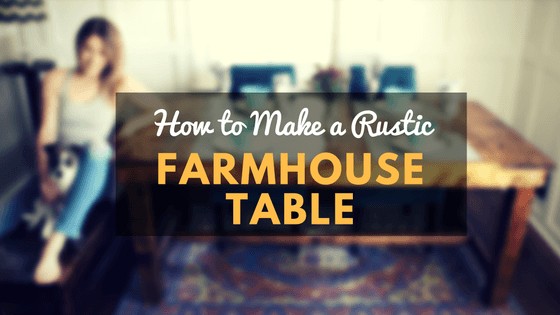Can’t get enough of trendy rustic furniture? Check out this farmhouse kitchen table tutorial based on the YouTube video from The Rehab Life, and build this staple furniture for all types of households without spending more than $50.
You can style it to look hip and classy with teal fabric chairs and bright colored tableware, or you can go for a natural down-to-earth look with a rustic bench – so many possibilities for this kitchen table.
What You'll Need:
- 1 pc. 4”x4” x10ft
- 3 pcs.1”x4” x10ft
- 2 pcs. 1”x10” x8ft
- 1 pc. 1”x10” x10ft
- 2 pcs. 2”x3” x8ft
- miter saw
- hammer
- small chisel/ screwdriver (optional)
- sanding block
- wood glue
- finishing nails (2")
- wood filler (optional)
- wood screws (2" and 5")
- paint brush/ rag
- wood stain
- polyurethane
Step 1: Measure and cut the wood

Measure the lumber into these sizes:
- Four 29 1/4” long pieces from the 4”x4”s
- Two 70” long pieces from one 1”x4”
- Five 33 1/2” long pieces from the other 1”x4”
- Four 53 1/2" long pieces from one 1”x10”
- Two 37” long pieces from the other 1”x10”
- Two 33 1/2" long pieces from the first 2”x3”
- Two 26 1/2" long pieces from the second 2”x3”
- One 63 1/2" long piece from the last 2”x3”
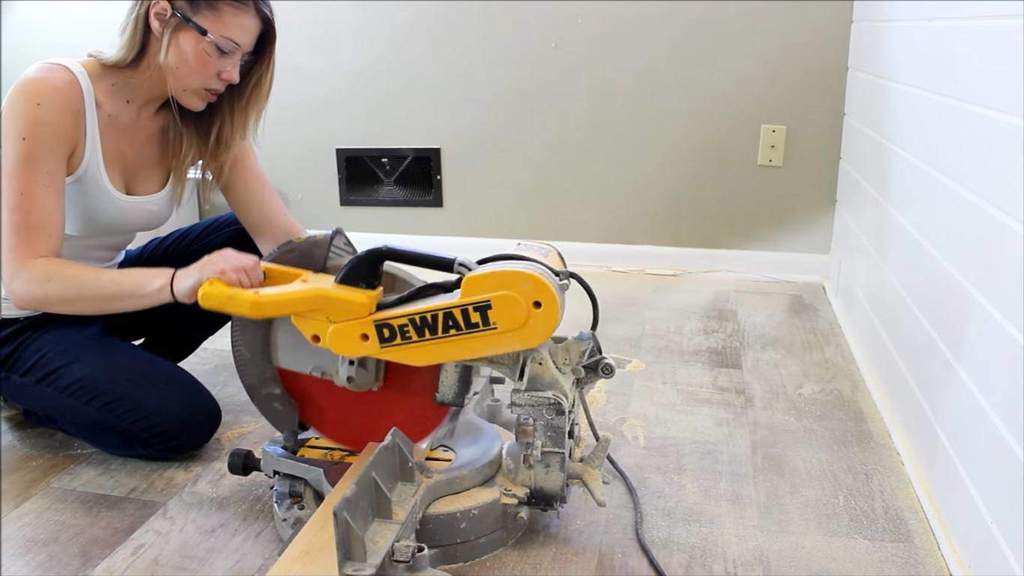
Cut the wood into boards using your miter saw.
Step 2: Pound the boards with a hammer
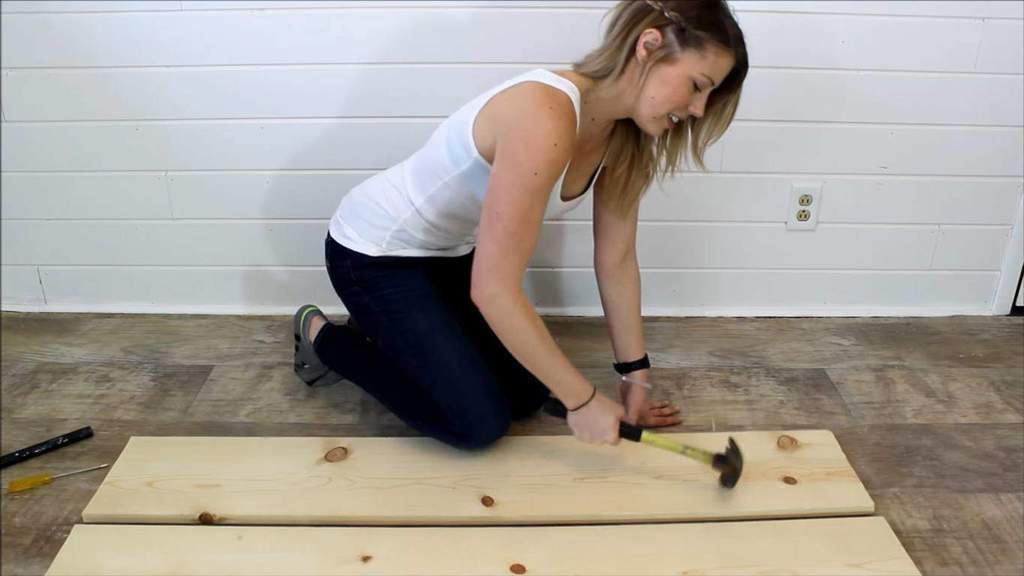
Like all the rustic projects we’ve covered, the wood in this table has to be pounded by a hammer or any other heavy tool to give it that iconic distressed look.

One technique you can also use is stabbing little holes into the wood with a small chisel or a screwdriver.
Step 3: Sand all the boards

Sand everything down with your sanding block.
Step 4: Build the table’s frame

The table starts with the frame. Take all your 1”x4”s, and arrange them like this.

Don’t forget to evenly adjust the “middle” boards inside the large rectangular frame. They have to be exactly 33 1/2" away from each other.

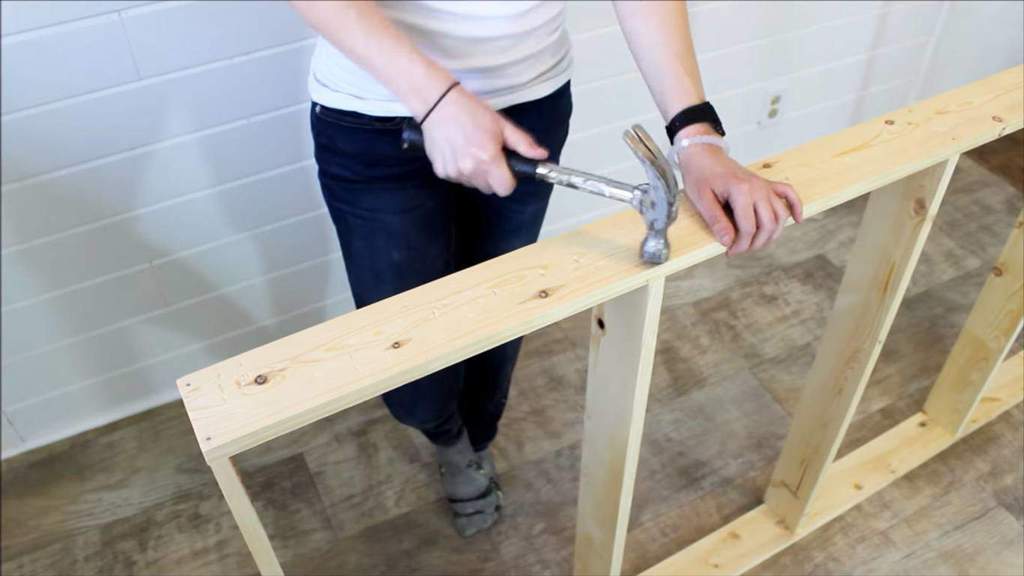
Attach the boards together using wood glue and nails. Use two nails for each connection.
Step 5: Place the 2”x3” x33 1/2” long pieces on top of the frame

Now put two 2”x3” x33 1/2” long pieces on top of the frame. Insert them flat into the spaces between the middle boards like this.

Make sure you center those boards 6” away from where the middle boards have been placed. Nail them into place.

Step 6: Put one 1”x10” x37” board at one end of the frame
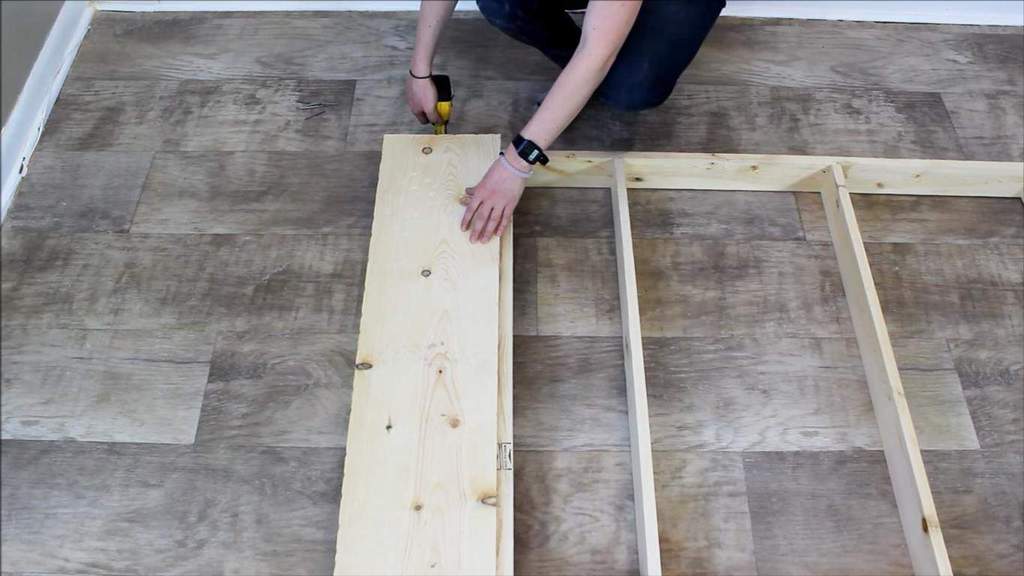
Lay the frame down with the 2”x3”s flush with the top side. Then place a 1”x10” x37” board at one end of the frame. Remember that there should be a 1” overhang. So, that 37” board isn’t flush with the 2”x3” x33 1/2” board that you just placed there in Step 5.

To stop wood glue from getting into the wrong places, trace the end of the 37” board with a pencil. This should tell you what areas are covered by the board and what areas should have glue.


Set the board into place with the glue, and secure it with nails.
Step 7: Lay down one 1”x10” x53 1/2" board
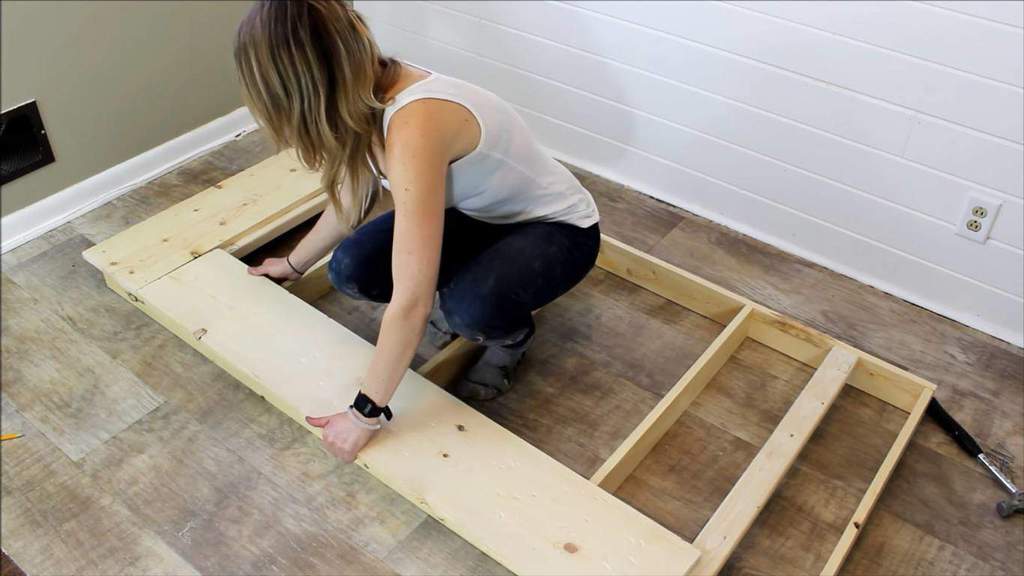
Grab one 1”x10” x53 1/2" long piece, and lay it flat at one side of the frame. There’s also a 1” overhang here, so just repeat the same process you used in putting the 37” board in Step 6.
These are tracing the sides with a pencil…
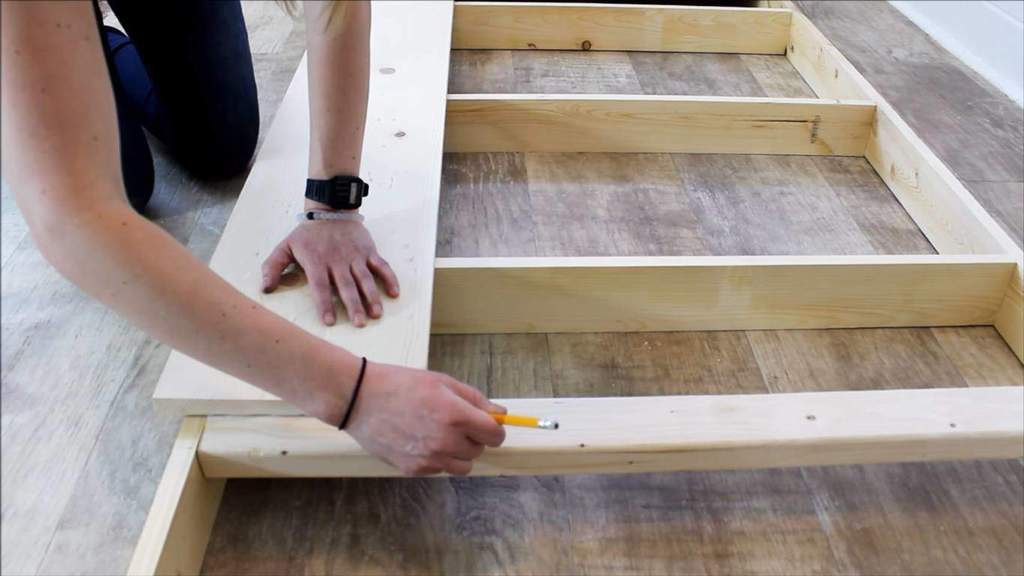
Using the pencil lines as guides for putting the glue...
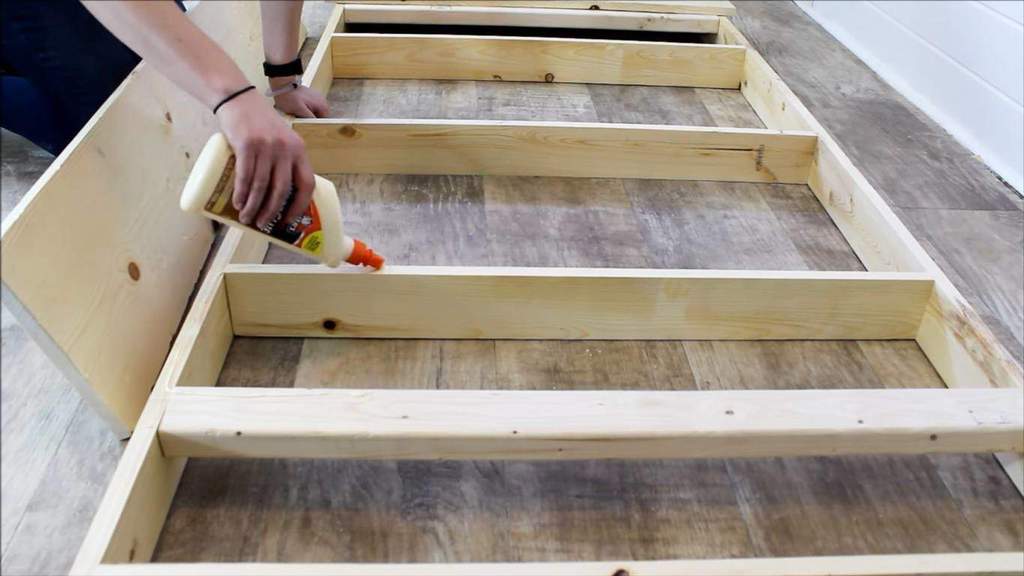
And nailing the board in place...
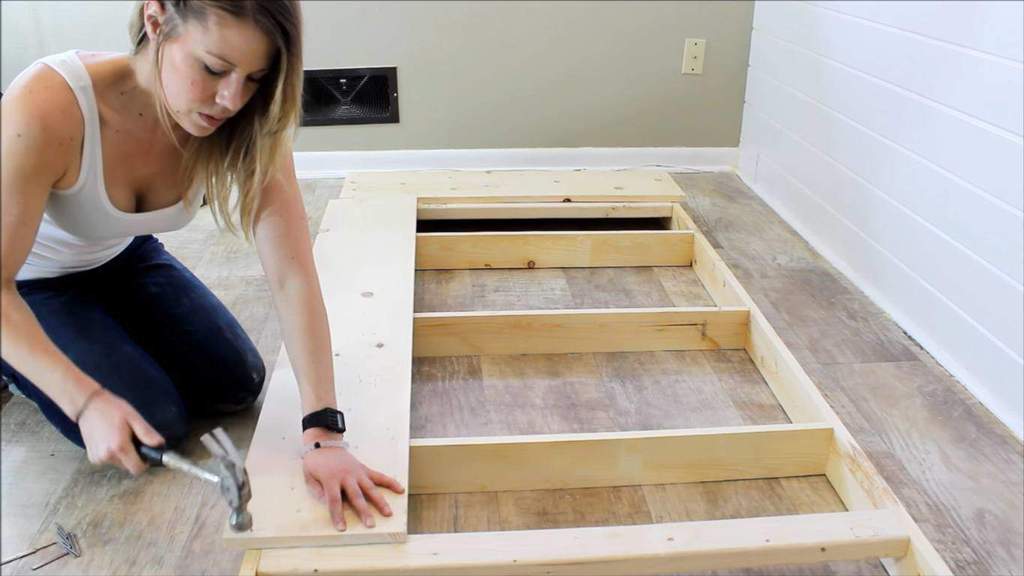
Step 8: Place the rest of the boards

Using the same process in Step 6, attach three more 1”x10” x53 1/2" long pieces.
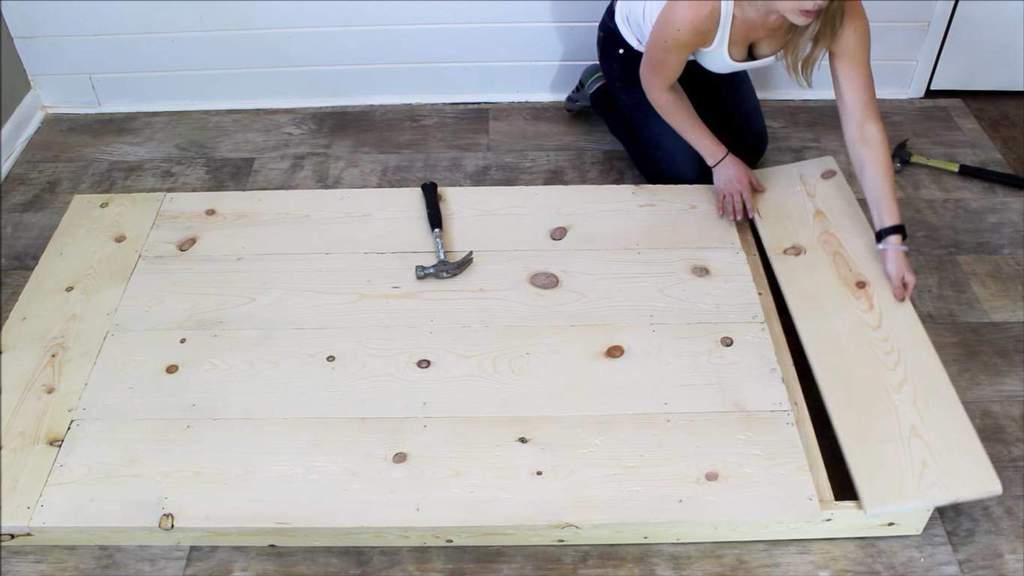
Then finish it off with one more 1”x10” x37” board. Once they’re all secured, your tabletop is now complete.
Step 9: Fill the gaps with wood filler (optional)
If you’re uncomfortable with the little holes and gaps, you can use wood filler to make them go away.
Step 10: Attach the legs
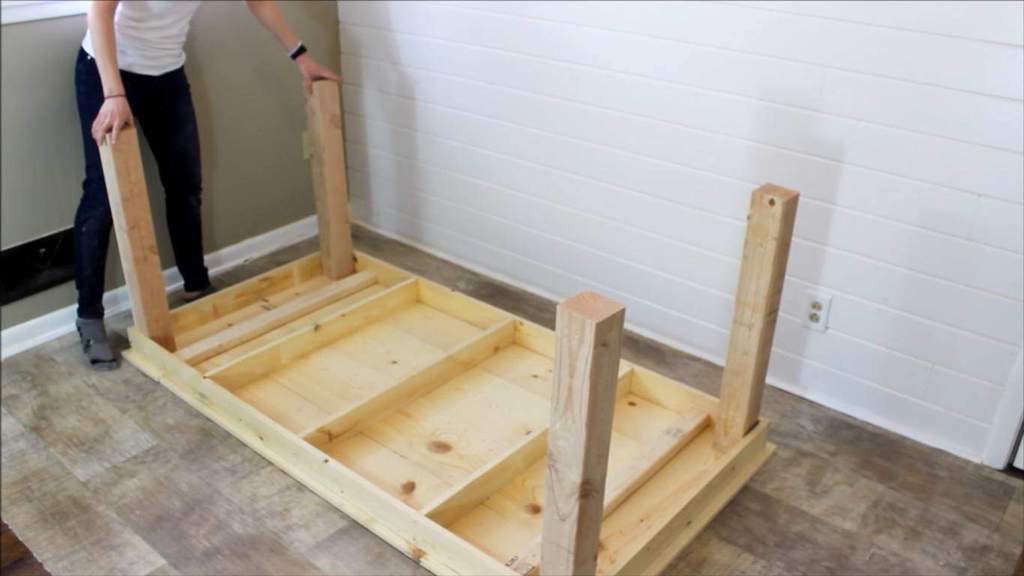
Now it’s time to give the table some legs. Flip the tabletop over. Take all the 4”x4” x29 1/4” pieces, and position them under the tabletop like this.
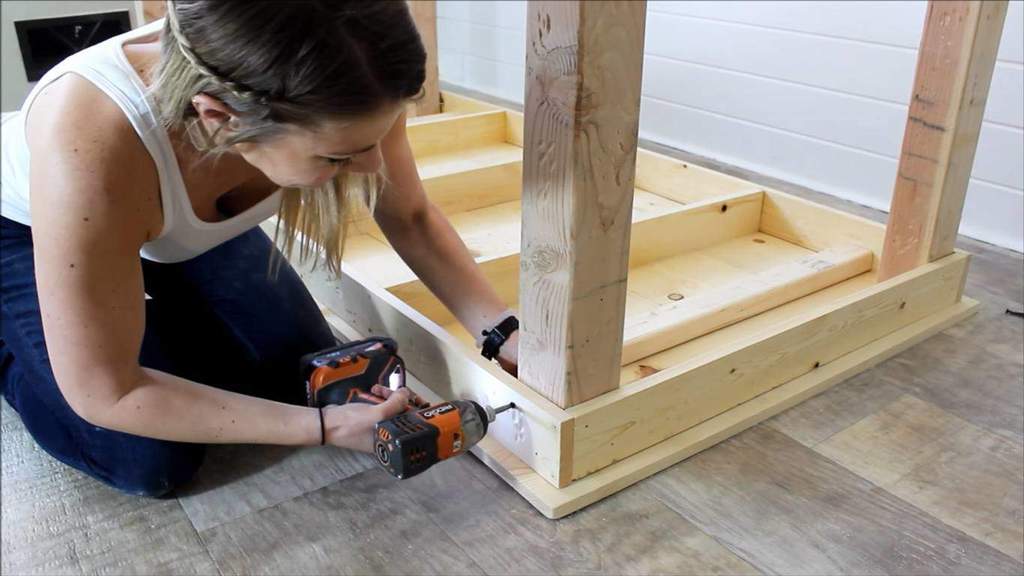
Screw them into the frame. Use four screws for every leg to have maximum support.
Step 11: Use the last board to make an H stretcher

To support the legs, make an H stretcher. Take the remaining wood, the 2”x3”s, and arrange them. This will form a giant capital letter “I” instead of an “H” since the table isn’t square shaped. It’s elongated and rectangular.

Screw the boards into place.
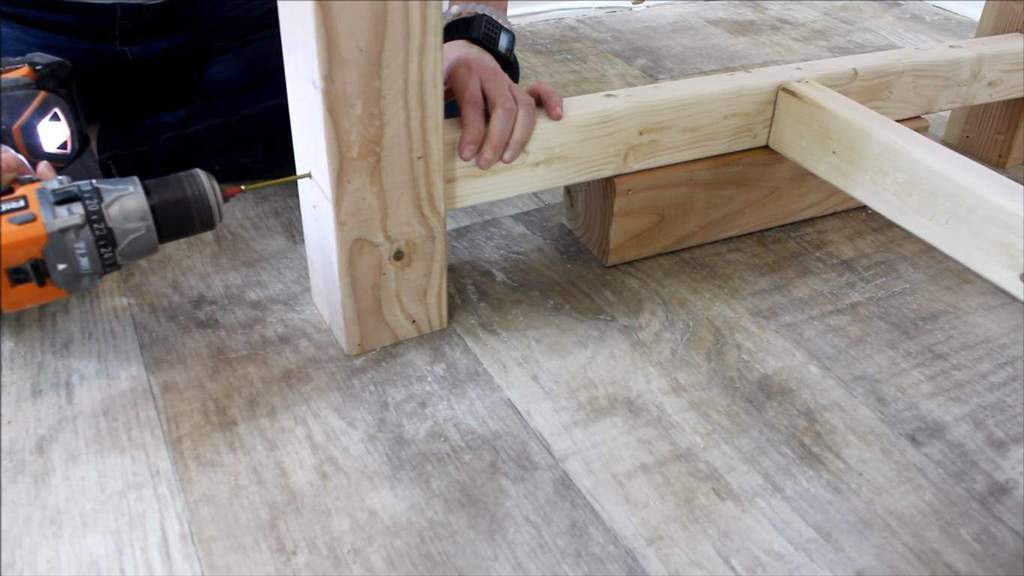
Place the giant I at the bottom of the table. Center it across each of the table’s legs, and hold it into place using 5” screws driven into each leg.
Step 12: Apply stain and poly

Using a rag or a paint brush, coat the table with wood stain.

Wait for the wood to dry. Then apply three even coats of polyurethane.
And viola! You now have a new dining table! A table that’s inspired from the refreshing look of a country farmhouse.
This tutorial is originally made by The Rehab Life. If you want to watch their video showing the making of this farmhouse table, click here or watch below:

